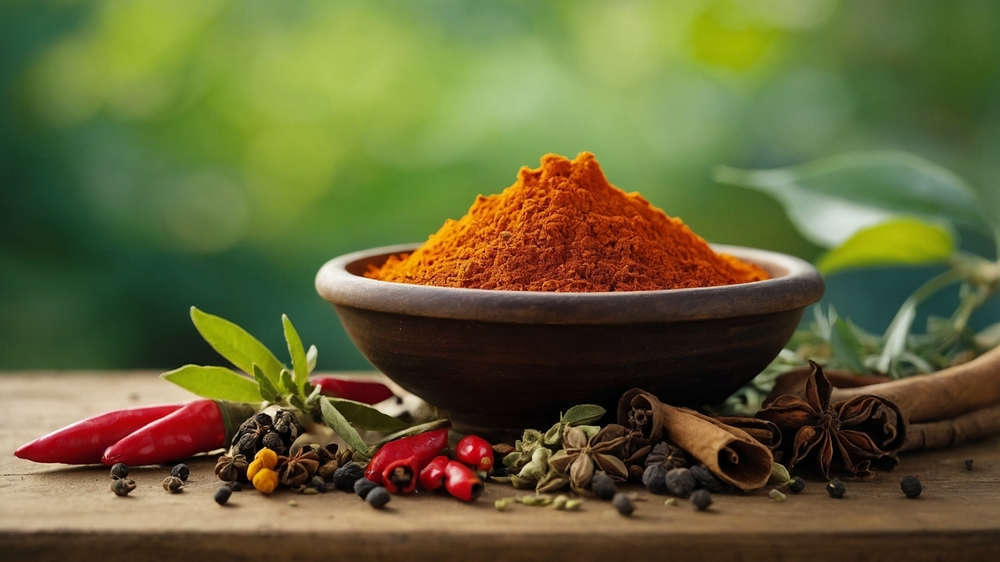In today’s culinary world, the fusion of tradition and innovation is reshaping how we experience food. At the heart of this transformation lies the creative use of spices and herbs. Once primarily valued for preservation and medicinal purposes, these natural flavor enhancers now play a central role in modern cuisine, influencing everything from high-end gastronomy to home-cooked meals. Their impact is not only about flavor but also about health, sustainability, and cultural storytelling.

The Revival of Ancient Flavors
Modern chefs and food enthusiasts are increasingly turning to ancient spice and herb traditions to enhance contemporary recipes. Ingredients like turmeric, cardamom, sumac, and fenugreek—once confined to specific ethnic kitchens—are now staples in trendy cafés and Michelin-starred restaurants. For instance, turmeric lattes, za’atar-roasted vegetables, and harissa-spiced meats have made their way into menus around the world. This revival highlights a growing appreciation for global flavors and a desire to reconnect with natural ingredients that have stood the test of time.
Innovation in Flavor Pairings
One of the defining characteristics of modern cuisine is experimentation. Chefs are constantly pushing boundaries by combining spices and herbs in unconventional ways. Sweet dishes now include savory elements like basil or rosemary, while desserts may feature chili or saffron for a surprising kick. Molecular gastronomy also incorporates spice extracts and herb oils to alter textures and create unique sensory experiences. These innovations allow for a greater depth of flavor and complexity, appealing to the adventurous palates of today’s diners.
Health and Wellness Trends
The health benefits of spices and herbs have helped elevate their status in modern cuisine. With a growing interest in wellness and functional foods, ingredients like ginger, garlic, cinnamon, and mint are being used not just for taste, but for their nutritional properties. Many consumers now actively seek dishes that incorporate anti-inflammatory or digestive herbs, blending the worlds of food and medicine. Plant-based and clean-eating movements have further boosted demand for these natural ingredients, especially when used to replace synthetic additives.
Sustainability and Local Sourcing
As the culinary world becomes more conscious of sustainability, herbs and spices are being locally grown and ethically sourced wherever possible. Urban gardens, farm-to-table restaurants, and organic food movements have embraced homegrown herbs like basil, parsley, thyme, and cilantro. Meanwhile, fair-trade sourcing of exotic spices like vanilla, cloves, and black pepper ensures that small-scale farmers benefit from global demand. This attention to origin and quality supports both environmental responsibility and economic fairness.
Cultural Fusion and Global Influence
Modern cuisine thrives on cultural fusion, and spices and herbs are essential tools in this culinary diplomacy. Dishes that blend elements of Indian, Middle Eastern, Latin American, and Southeast Asian cuisines reflect our increasingly interconnected world. A taco seasoned with Moroccan ras el hanout, or sushi enhanced with Thai basil-infused soy, tells a story of cross-cultural creativity. These combinations allow people to explore different cultures through food, creating a shared language of flavor.
Egypt and Its Role: Fertile Land and Ideal Climate
Egypt’s diverse climatic zones—from the Nile Delta to Upper Egypt—create favorable conditions for growing a wide range of herbs and spices. The fertile soil, long growing seasons, and abundant sunshine make it ideal for cultivating crops such as chamomile, marjoram, basil, dill, fenugreek, anise, coriander, and mint. These herbs are valued for their potency, aroma, and purity, making them highly sought after in international markets.
A Major Global Exporter
Today, Egypt is one of the world’s leading exporters of dried herbs and spices, particularly to Europe, North America, and the Middle East. Egyptian chamomile, for instance, is prized for its high essential oil content, while spearmint and basil from Egypt are favored for their vibrant flavor and color. The rise of modern cuisine has increased demand for these premium ingredients, and Egypt is well-positioned to meet it. Egyptian exporters have also embraced international food safety and quality standards (such as ISO, HACCP, and organic certifications), enhancing their competitiveness in global markets.
summary
As the culinary world evolves and embraces global flavors, Egypt stands out as a bridge between ancient tradition and modern innovation. Its fertile lands, deep knowledge, and high-quality exports position it as a cornerstone in the global supply of herbs and spices. From the fields of Fayoum to the kitchens of Paris, New York, and Tokyo, Egyptian herbs and spices are playing a powerful role in shaping the tastes and values of contemporary cuisine. Through this contribution, Egypt continues to influence how the world cooks, eats, and lives.
